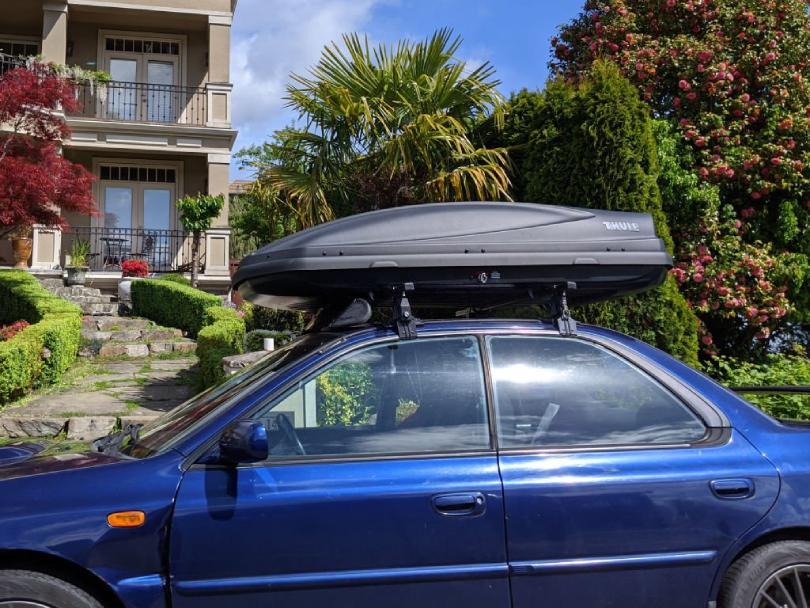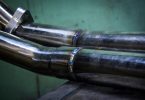The Thule roof rack makes it easy to haul surfboards, bikes, kayaks, and other gear. Once home, the roof rack should be removed. Here we look at reasons to remove the roof rack, removing the rack without the key, and removing the Thule roof rack using the key.
How the Roof Rack Affects Your Vehicle
Installing and removing the Thule roof rack is convenient and easy. Whether loaded with gear or empty, the rack on your vehicle can negatively affect your car’s performance. The following are ways the roof rack affects your car or truck.
Added weight
Know your car’s weight limit. The owner’s manual will have the maximum weight limit for the roof of your vehicle. Be sure to honor this weight limit! The increased weight of the roof bars may jeopardize your vehicle’s roof. Increased road friction from the extra weight can increase gas consumption.
The effect on your brakes
A loaded roof rack affects your stopping and acceleration, especially on hills and mountains. Use extra caution when driving in these situations.
Anything that sits on the roof also changes the vehicle’s center of gravity. As the center of gravity increases, it changes how the car handles. The roof rack, especially when loaded with gear, increases your stopping distance by causing the body to roll. The heavier the load, the less stability the car has. If the rack’s load should shift at high speed, you could lose control of your vehicle.
When the rack is empty, you should remove it.
Added height
Take note of how high the Thule roof rack is once loaded, especially if you have an SUV or taller vehicle. The rack and your gear increase the height making it harder to navigate viaducts, parking garages, and low bridges. Watch the height restrictions on the signs.
Increase in gas consumption
Even the most aerodynamic roof rack will create wind resistance even if it is low resistance. Pair that with the added weight of the entire roof rack and contents, and your vehicle has to work harder, increasing fuel consumption. Remove the rack when it’s empty to eliminate the increase in gas consumed.
Decreased speed
Thule recommends a safe speed limit to ensure your roof rack, gear, and car’s roof are damage-free. Driving above the speed Thule recommends can result in lift that tears the roof rack off and damages the vehicle’s roof.
Gale force winds can damage the roof rack and car’s roof. It decreases your fuel consumption. When not using the roof rack, it should be removed.
Roof Rack Removal
Tools
- Flathead screwdriver
- Thule roof rack key
Step 1: On the bar you are removing first, raise the tensioning lever on each side to release the tension on the Thule bar to the foot and the foot to the roof. Doing this lets the feet and the bar move.
Step 2: Open the doors on each side of the vehicle under the roof bar mountings.
Step 3: Not all Thule roof racks need a key. Check the Thule manual for your rack. Using the Thule key, unlock the knob at the foot’s base or the outer housing. Use the flathead screwdriver to remove the plastic lock plugs.
Step 4: If your roof rack has an AcuTight tool, use the tool to loosen the clamp. Turn the foot’s knob counterclockwise to loosen the clamp. The handle is bright green and is stored inside the foot housing. An AcuTight tool
Step 5: Using an upward motion, lift the roof bar setting it to the side. If the rubber pads have stuck to the roof, use a plastic scrapper or credit card to lift the pads off the roof.
Step 6: Use soap and water to clean the areas where the roof bar pads were sitting.
To detach the roof bar and the feet, remove the end caps and slide the feet out. Some models may have a small black lever located on the back of the bar that lifts to remove the feet.
Keyless Roof Rack Removal
Keys are small and easy to lose. Sometimes you simply forget them. Here are four methods to get that roof rack off without your key.
#1 – Philips-Head Screwdriver
In this method, you use the Phillips-head screwdriver to remove the screws. Then remove the rubber pads and dismantle the feet.
#2 – Paper Clip
This method requires a sturdy paperclip and flathead screw. Place the paperclip in the
keyhole and push gently, releasing the lock. Use the screwdriver to push the wave bolt
up and allow you to remove the rack!
#3 – Hex wrench
To use the hex wrench as a key, place it in the lock applying pressure to the “L-shaped” end of the hex wrench. This will pop the wave bolt so you can remove the roof rack.
#4 – Force it off
This method is definitely your last resort. Using a rubber mallet, hit the crossbar’s end at the attachment to the vehicle. You want to hit it firmly enough to rattle the crossbar, to lift it. You may have to do this several times before the crossbar co-operates. Hitting the car too hard can dent the roof and cause damage to the paint job!
A word about keys
Keys are easy to lose and pain to replace. Keeping it a safe, memorable place is a good idea. Store it in the glove box of the car for when need it is best. It will always be there, and you won’t forget the key.
If you lose keys frequently, buying a replacement key before losing the original is a good idea, so you have it on hand as needed. You can purchase a replacement key online or in a sports store for $5-$10.
While some Thule roof racks come with self-storing keys and keyless lock codes, many require a key to lock and unlock the roof rack.
Master lock replacement cylinders and keys are also available online and in stores if you break the key in the lock or somehow manage to damage the cylinder using a keyless method.










Leave a Comment